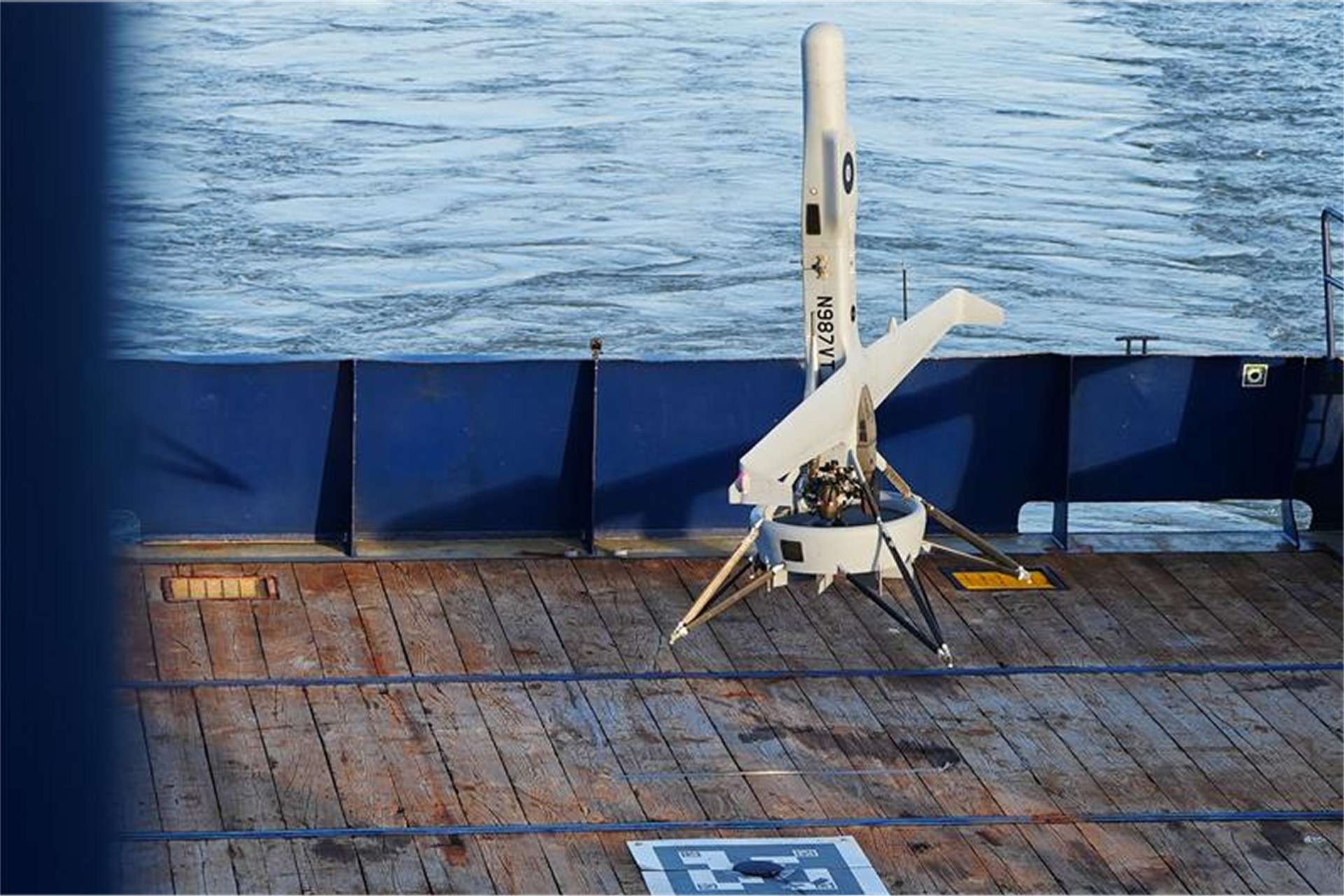Breaking News
Strategic Leap: Japan Acquires V-BAT UAVs for Naval Surveillance.
According to information published by ShieldAI on January 7, 2025, Japan is set to acquire advanced V-BAT unmanned aerial vehicles (UAVs) from U.S. defense company Shield AI. An allocation of 4 billion yen (approximately $25 million) has been designated for this procurement. The V-BAT, renowned for its compact vertical take-off and landing (VTOL) system, is suited for deployment aboard smaller naval vessels, offering operational flexibility and endurance for monitoring expansive maritime territories.
Follow Army Recognition on Google News at this link

Japan acquires V-BAT UAVs to elevate maritime patrols with VTOL technology and extended operational endurance. (Picture source: ShieldAI)
The V-BAT UAV is renowned for its vertical take-off and landing (VTOL) capabilities, requiring minimal space for deployment—specifically, a 12-foot square area (about 3.7 meters). This feature makes it particularly suitable for operations on naval vessels with limited deck space. Once airborne, the V-BAT transitions to horizontal flight, utilizing its wings for lift, and can sustain operations for up to 10 hours. This endurance is crucial for extended surveillance missions over Japan's vast maritime territories.
In the context of a potential conflict with China, the V-BAT UAV could play a pivotal role in bolstering Japan’s maritime security and operational readiness, especially in contested areas such as the East China Sea. These waters, including the Senkaku Islands (claimed by both Japan and China), are a hotspot for geopolitical tensions. A conflict scenario would demand rapid, precise, and sustained intelligence-gathering and situational awareness, areas where the V-BAT excels.
China’s naval strategy emphasizes anti-access/area-denial (A2/AD) capabilities, bolstered by advanced missile systems, large surface fleets, submarines, and maritime militias. To counter this, the JMSDF must rely on persistent ISR and agile platforms like the V-BAT UAV to maintain awareness and provide actionable intelligence. The V-BAT’s ability to operate from smaller patrol ships, frigates, and remote bases gives Japan a distinct advantage in deploying assets near contested areas without escalating tensions.
During a conflict, the V-BAT’s long-endurance surveillance can be used to monitor and track Chinese naval activities, such as movements of destroyers, submarines, and amphibious assault ships. This real-time intelligence is crucial for countering aggressive maneuvers or amphibious landings. Its ability to relay this data to JMSDF command and allied forces ensures a coordinated and informed response, which is critical in managing the fast-paced dynamics of naval engagements.
In anti-submarine warfare, the V-BAT can assist in detecting Chinese submarines operating near Japanese waters. The East China Sea is a known transit area for Chinese submarines heading into the Pacific, and the V-BAT, equipped with synthetic aperture radar or magnetic anomaly detectors, could provide an additional layer of defense by identifying submarine locations and relaying their movements to JMSDF assets.
The UAV’s stealthy design and low radar signature make it ideal for covert ISR missions in sensitive zones. For instance, it could be deployed to shadow Chinese vessels or maritime militia ships operating near the Senkaku Islands, documenting activities for strategic decision-making.
In scenarios where China employs swarming tactics using smaller vessels or drones, the V-BAT can provide overwatch for JMSDF vessels, identifying threats early and coordinating countermeasures. Its modular payloads can also be adapted for electronic warfare, such as jamming Chinese communications or gathering electronic intelligence to disrupt their operational cohesion.


























